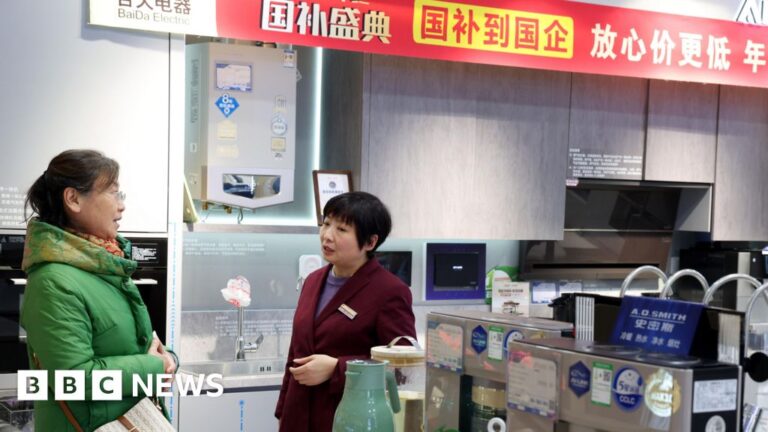The Chinese government has expanded the list of products people can trade in to get a discount of up to 20% on new products, as the country tries to revive its flagging economy.
The list now includes items such as microwave ovens, dishwashers, rice cookers and water purifiers.
State-backed trade-in programs already covered TVs, phones, tablets and smartwatches as well as electric and hybrid vehicles.
The world’s second-largest economy faces several challenges, including weak consumer demand and a deepening housing crisis.
On Wednesday, officials said 81 billion yuan (£8.9 billion; $11 billion) had been set aside this year for the consumer goods exchange program.
China’s top economic planning body said the projects, launched in March, had already produced “visible effects”.
According to the country’s Commerce Ministry, these policies have boosted sales of big items such as household appliances and cars.
But some economists question whether these measures will be enough to significantly increase consumer consumption.
“This approach has had mixed success so far,” said Harry Murphy Cruise, head of the China economy at Moody’s Analytics.
“While this supported sales of some listed goods, such as cars and appliances, it did not lead to an overall increase in spending.”
In recent months, China has rolled out more measures to support its domestic economy as the country’s exporters face growing challenges.
In December, a key meeting of Chinese leaders stressed the need for “vigorous” efforts to boost consumer spending.
It came as President-elect Donald Trump, who is due to return to the White House this month, threatened to impose 60% tariffs on goods made in China.
China is due to announce its economic growth figures for 2024 next week, which Beijing has said it expects to be around 5%.

